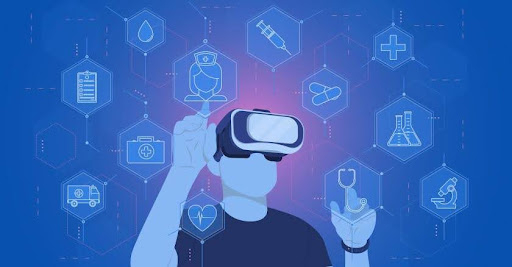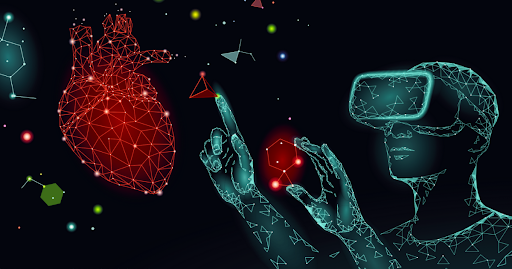
The creation of virtual reality (VR) is a compelling story that embodies dedication, innovation, and imagination. It began in the 1950s when Morton Heilig first envisioned a multi-sensory theater, followed by Ivan Sutherland's invention of the very first head-mounted display in 1968. These early developments laid down essential foundations for VR which combined various fields including science, technology, and art. Through the 1980s and 1990s, VR gained attention from the digital revolution and advancements in computer graphics. Recently, in the 21st century, VR has risen as a consumer product, thanks to significant technological advancements from tech giants such as Microsoft and Apple. This evolution from what was once just an idea to mainstream technology reflects VR's long journey through experimentation. This development, and eventual integration into our various industries including education and medicine, showcases its potential to reshape our interaction with the digital world.
My very first introduction to virtual reality was in 2018 through the movie, Ready Player One. I was pulled into the OASIS: a vast virtual playground that stretched reality to the limits of my imagination, offering planet-hopping odysseys, and exciting video games. Now, in the present day, technologies like the Meta Quest 3 and the Apple Vision Pro prove that Spielberg’s work was more than just a movie; it was a window into the future where VR, augmented reality (AR), and mixed reality (MR) intertwine to redefine our reality. This initial experience was a revelation for me, unveiling a metaverse with exciting potential. Yet, as we stand on the brink of this VR renaissance, it is crucial to consider the question: Will the expansion of VR/AR/MR technologies create an era of access and equity, mirroring the boundless opportunities of the OASIS, or will it merely amplify existing disparities?
The answer is that the metaverse can do both.

The focal point of the buzz surrounding VR/AR/MR technologies lies in its promise to democratize access to diverse experiences and opportunities. From an educational standpoint, this impact is profound because it revolutionizes how teachers teach and students learn. Students around the globe could put on a pair of goggles and visit historical sites, enter blood streams like the magic school bus, or simulate chemical experiments—all from the safety and accessibility of their classrooms. Additionally, VR's simulation capabilities provide hands-on experience in a fake, virtual setting, which is ideal for training in disciplines like medicine, engineering, and science, where real-world practice like surgery may be impractical or harmful. By creating these immersive and interactive environments, VR makes difficult concepts easier to understand while making it more engaging for students at the same time. Furthermore, as highlighted in research published by Frontiers in Robotics and AI, VR and AR in educational settings can significantly enhance understanding and retention, by offering personalized learning paths that are adapted to each student’s pace and style (Slater and V. Sanchez-Vives). These benefits are vital because it could level the educational playing field by providing high-quality learning experiences to all students regardless of their location or socioeconomic status.

The world is constantly changing and with the development of these VR technologies, new standards and qualifications required to enter the workforce will emerge. So, this technology not only enriches the learning experience but also plays a role in preparing students for future metaverse workplaces, by ensuring they are adept at navigating these rising technologies.
As previously mentioned, the workplace is another arena where the metaverse is making a lot of noise. VR technologies can facilitate remote work, a concept that became a global necessity during the COVID-19 pandemic, and collaboration in ways that were previously unimaginable. Employees can now work together in virtual conference rooms, interacting with 3D models or data in more engaging, visual ways that you couldn’t with a traditional Zoom call. In doing so, it leads to a global workplace that is even more accessible and inclusive. Individuals with disabilities or those living in remote, confined areas could find new employment opportunities, given the ability to work in VR environments that tailor to their needs or preferences. Furthermore, an article written by Jeanne C. Meister, How Companies Are Using VR to Develop Employees’ Soft Skills, talks about how VR enhances the workplace by offering immersive training that improves soft skills like communication, leadership, and customer service. Similar to VR's impact on education, it allows for realistic simulations where employees can practice and refine their skills in a safe, controlled environment. This tool also provides instant feedback helping companies and employees to improve their interactions with customers. This method is more engaging and cost-effective compared to traditional training, leading to faster learning and a better emotional connection with the content. Companies like H&R Block and Cognizant are already leveraging VR for customer service training and presentation skills development, showing significant improvements in employee performance and customer satisfaction (Meister).
Yet, for all its glittering potential, the path to integrating these technologies into everyday learning is littered with obstacles. The concerns of educators echoed in recent EdTech reports, highlight some of the practical challenges: the daunting costs, the bulky headset, and the occasional technical hiccups. Off the list, I believe the initial costs of VR hardware and the need for high-speed internet access is the biggest concern because it limits those who don’t have the means to afford it, widening the gap between the privileged and underprivileged. It is important to note that these are not insignificant obstacles. They represent the very blurry line between the promise of these technologies and the practicalities of bringing them to every classroom and workplace (School of Education). Moreover, the adoption of these technologies could lead to job displacement in sectors that are unable to integrate these benefits into their system. As a result, the digital skills gap might become widened, with those lacking access to technology or the skills to use it left behind.
As we navigate this new, digital frontier, the key to ensuring that these technologies create more access and equity lies in thoughtful implementation of inclusive policies, and the continuous effort of all of us and big tech companies to bridge digital divides. By doing so, I believe we can harness the potential of VR/AR/MR to not only mimic the boundless possibilities of the OASIS but to build a future where technology empowers us all, equally.
Works Cited
Meister, Jeanne. “How Companies Are Using VR to Develop Employees’ Soft Skills.” Harvard Business Review, 11 Jan. 2021, hbr.org/2021/01/how-companies-are-using-vr-to-develop-employees-soft-skills. Accessed 20 Feb. 2024.
School of Education. “Benefits of Virtual Reality in Education: Tools & Resources | American University.” Soeonline.american.edu, 2019, soeonline.american.edu/blog/benefits-of-virtual-reality-in-education/. Accessed 20 Feb. 2024.
Slater, Mel, and Maria V. Sanchez-Vives. “Enhancing Our Lives with Immersive Virtual Reality.” Frontiers, Frontiers Media S.A., 19 Dec. 2016, www.frontiersin.org/articles/10.3389/frobt.2016.00074/full. Accessed 20 Feb. 2024
Image credit


